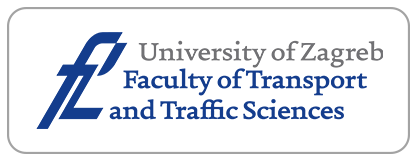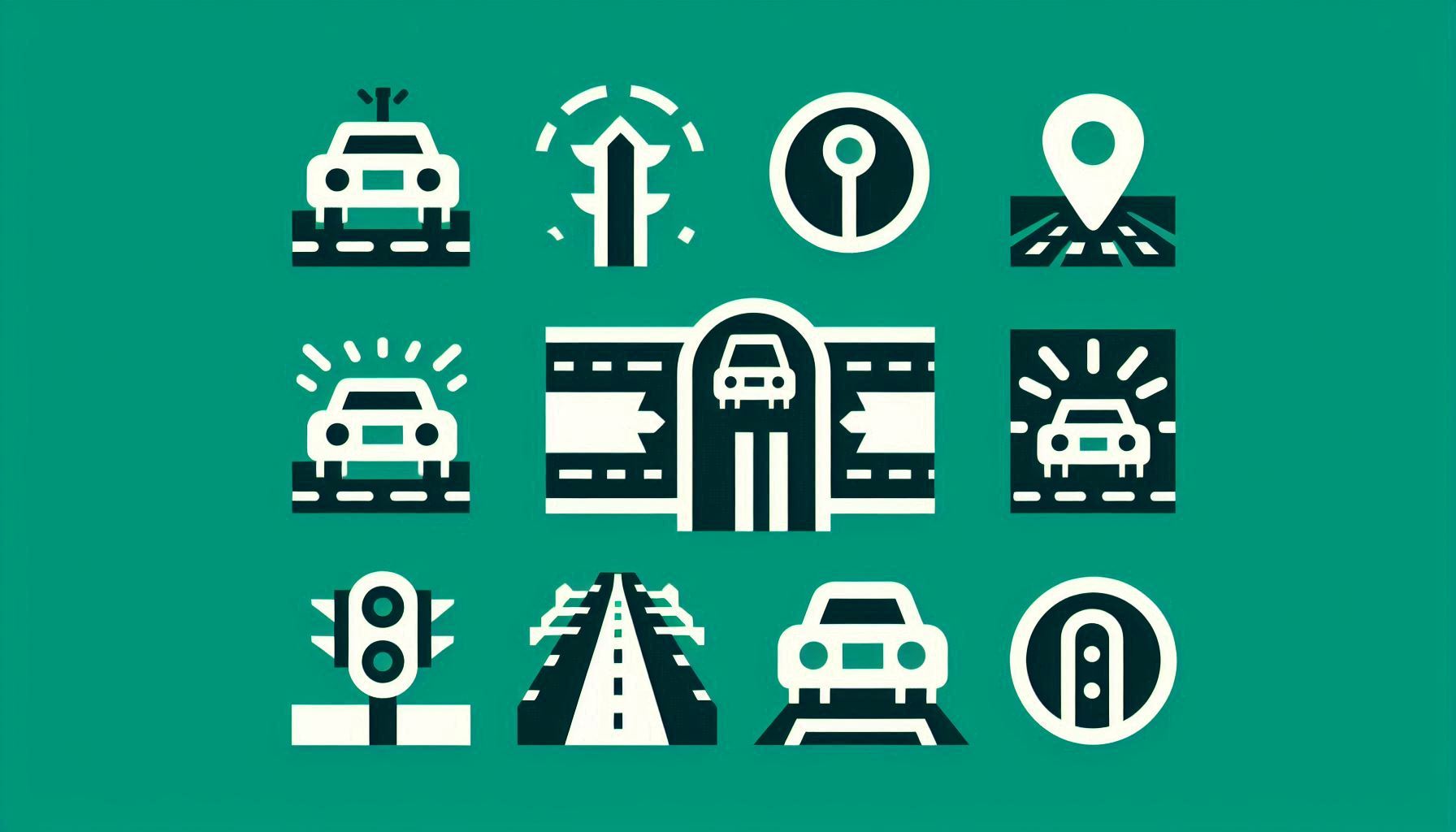Investigating the Asymmetric Effects of Economic and Demographic Factors on Traffic Accident Severity – Evidence from a Nonlinear ARDL Approach

Downloads
This study adopts an innovative nonlinear autoregressive distributed lag (N-ARDL) approach and compares it with the standard ARDL and the traditional ordinary least-squared (OLS) regressions. These approaches are used to examine the long-run and dynamic relationships between the accident severity in urban Jordan cities and the following explanatory variables: proportion of population living in urban areas, GDP growth rate, total length of road networks, vehicle ownership growth rate and spaces of newly added buildings. The case study covers the period from 2004 to 2022. The standard and nonlinear ARDL estimates showed the presence of long-run co-integration between variables. Moreover, the NARDL estimates on the long- and short-run indicate a varying effect of the considered explanatory variables on accident severity at the positive and negative partial sum. In general, GDP growth positively affects accident severity in the short run. Whereas, the expansion of road length presents a positive and negative impact on the upward and downward partial sum. In contrast, the explanatory variables differed in their impact on accident severity on each side of asymmetry. The variability of the results obtained by the nonlinear ARDL model helps suggest different policies for different high and low levels of traffic safety.
Downloads
Jordan Traffic Institute. Traffic Accidents in Jordan. 2024. Available at: https://psd.gov.jo/en-us/content/digital-statistics/
Ghadi M, Török Á, Tánczos K. Study of the economic cost of road accidents in Jordan. Periodica Polytechnica Transportation Engineering. 2018. DOI: 10.3311/PPtr.10392.
Rabayah HS, Ayoush M, Bazlamit SM. Cost-based analysis for high severity locations of traffic accidents in Jordan. International Journal of Engineering Sciences & Research Technology. 2016;5(12):409–416. DOI:10.5281/zenodo.203803.
Al-Masaeid HR, Bazlamit SM, Al-Zedaneen AE, Al-Mofleh HM. Impact of fasting on traffic accidents. Jordan Journal of Civil Engineering. 2020;14(3):431–442.
Ghadi MQ, Török Á. Evaluation of the impact of spatial and environmental accident factors on severity patterns of road segments. Periodica Polytechnica Transportation Engineering. 2021;49(2):146–155. DOI: 10.3311/PPTR.14692.
Li Z, Liu P, Wang W, Xu C. Using support vector machine models for crash injury severity analysis. Accident Analysis and Prevention. 2012;45:478-86. DOI: 10.1016/j.aap.2011.08.016.
Ghadi MQ. Multilevel analysis of road accident frequency: The impact of the road category. International Journal of Transport Development and Integration. 2023;7(2):123-130. DOI: 10.18280/ijtdi.070207.
Ismael KS, Razzaq NA. Traffic accidents analysis on dry and wet road bends surfaces in Greater Manchester-UK. Kurdistan Journal of Applied Research. 2017;2(3):284–291. DOI: 10.24017/science.2017.3.51.
Ghadi M, Török Á, Tánczos K. Integration of probability and clustering based approaches in the field of black spot identification. Periodica Polytechnica Civil Engineering. 2019;63(1):46–52. DOI: 10.3311/PPci.11753.
Ghadi MQ, Török Á. Comparison of different road segmentation methods. PROMET - Traffic&Transportation. 2019;31(2):163–172. DOI: 10.7307/ptt.v31i2.2937.
Ghadi M, Török Á. A comparative analysis of black spot identification methods and road accident segmentation methods. Accident Analysis & Prevention. 2019;128:1–7. DOI: 10.1016/j.aap.2019.03.002.
Al-Reesi H, et al. Economic Growth, motorization, and road traffic injuries in the Sultanate of Oman, 1985-2009. Traffic Injury Prevention. 2013;14(3):322-328. DOI: 10.1080/15389588.2012.694088.
Yannis G, Papadimitriou E, Folla K. Effect of GDP changes on road traffic fatalities. Safety Science. 2014;63(2):42–49. DOI: 10.1016/j.ssci.2013.10.017.
Scuffham PA. Economic factors and traffic crashes in New Zealand. Applied Economics. 2003;35(2):179-188. DOI: 10.1080/0003684022000017566.
Oreko BU, Nwobi-Okoye CC, Okiy S, Igboanugo AC. Modelling the impact of intervention measures on total accident cases in Nigeria using Box-Jenkins methodology: A case study of federal road safety commission. Cogent Engineering. 2017;4(1):1345043. DOI: 10.1080/23311916.2017.1345043.
Twenefour FBK, Ayitey E, Kangah J, Brew L. time series analysis of road traffic accidents in Ghana. Asian Journal of Probability and Statistics. 2021;11(2):12-20. DOI: 10.9734/ajpas/2021/v11i230262.
Dutta B, Barman MP, Patowary AN. Application of ARIMA model for forecasting road accident deaths in India. International Journal of Agricultural and Statistical Sciences. 2021;16(2):607-615.
Rabbani MBA, et al. A comparison between seasonal autoregressive integrated moving average (SARIMA) and exponential smoothing (ES) based on time series model for forecasting road accidents. Arabian Journal for Science and Engineering. 2021;46(03–62):11113-11138. DOI: 10.1007/s13369-021-05650-3.
Deretić N, et al. SARIMA modelling approach for forecasting of traffic accidents. Sustainability (Switzerland). 2022;14(8):4403. DOI: 10.3390/su14084403.
Ye F, et al. Investigating the severity of expressway crash based on the random parameter logit model accounting for unobserved heterogeneity. Advances in Mechanical Engineering. 2021;13(12):168781402110672. DOI: 10.1177/16878140211067278.
Li X, Wu L, Yang X. Exploring the impact of social economic variables on traffic safety performance in Hong Kong: A time series analysis. Safety Science. 2018;109:67-75. DOI: 10.1016/j.ssci.2018.05.010.
Bektaş S. Examining the impact on road safety performance of socioeconomic variables in Turkey. Transportation Research Record. 2022;2676(4):036119812110363. DOI: 10.1177/03611981211036374.
Li X, et al. The effects of macroeconomic factors on road traffic safety: A study based on the ARDL-ECM model. Sustainability (Switzerland). 2020;12(24):10262. DOI: 10.3390/su122410262.
Ageli MM, Zaidan AM. Road traffic accidents in Saudi Arabia: An ADRL approach and multivariate granger causality. International Journal of Economics and Finance. 2013;5(7):26-31. DOI: 10.5539/ijef.v5n7p26.
Ayodeji OA, Dauda O, Oyelami LO. Economic growth, motorisation and road traffic safety In Nigeria. Ilorin Journal of Economic Policy, Department of Economics, University of Ilorin. 2020;7(7):16–34. Available at: https://ideas.repec.org/a/ris/ilojep/0021.html
Ali Q, Yaseen MR, Khan MTI. Road traffic fatalities and its determinants in high-income countries: a continent-wise comparison. Environmental Science and Pollution Research. 2019;26(7):19915-19929. DOI: 10.1007/s11356-019-05410-9.
Imran K. The relationship between per capita GDP and road accidents in Sri Lanka: an ARDL bound test approach. Asian Journal of Empirical Research. 2018;08(07):238-246. DOI: 10.18488/journal.1007/2018.8.7/1007.7.238.246.
Ali Q, Yaseen MR, Khan MTI. The impact of temperature, rainfall, and health worker density index on road traffic fatalities in Pakistan. Environmental Science and Pollution Research. 2020;27(5):19510-19529. DOI: 10.1007/s11356-020-08233-1.
Yaseen MR, Ali Q, Khan MTI. General dependencies and causality analysis of road traffic fatalities in OECD countries. Environmental Science and Pollution Research. 2018;25(7):1-16. DOI: 10.1007/s11356-018-2146-4.
Akinyemi YC. Short- and long-run impacts of gasoline price and macroeconomic factors on road traffic safety in Nigeria. African Development Review. 2023;35(3):308-319. DOI: 10.1111/1467-8268.12710.
Hossain MA, Acet H, Ahmed Z, Majumder A. Revisiting inflation and growth nexus in Bangladesh: An asymmetric cointegration based on non-linear ARDL approach. Revista Finanzas y Politica Economica. 2021;13(2):371-402. DOI: 10.14718/REVFINANZPOLITECON.3914.
Nusair SA, Olson D. Asymmetric oil price and Asian economies: A nonlinear ARDL approach. Energy. 2021;219(8):119594. DOI: 10.1016/j.energy.2020.119594.
Udeagha MC, Ngepah N. The asymmetric effect of trade openness on economic growth in South Africa: a nonlinear ARDL approach. Economic Change and Restructuring. 2021;54(6):491-540. DOI: 10.1007/s10644-020-09285-6.
Shin Y, Yu B, Greenwood-Nimmo M. Modelling asymmetric cointegration and dynamic multipliers in a nonlinear ARDL framework. SSRN Electronic Journal. 2011. DOI: 10.2139/ssrn.1807745.
Rezaei S, et al. Determinant of road traffic crash fatalities in Iran: A longitudinal econometric analysis. Journal of Research in Health Sciences. 2015;15(3).
Morrison C, Albuquerque E. Modelling New Zealand road deaths. Journal of Road Safety. 2021;32(2):4-15. DOI: 10.33492/jrs-d-19-00246.
Alam MS, Tabassum NJ. Spatial pattern identification and crash severity analysis of road traffic crash hot spots in Ohio. Heliyon. 2023. DOI: 10.1016/j.heliyon.2023.e16303.
The World Bank Group. 2024. Available at: https://data.worldbank.org/country/jordan
The department of statistics of Jordan. Annual reports. 2024. Available at: https://dosweb.dos.gov.jo/
Godil DI, Sarwat S, Sharif A, Jermsittiparsert K. How oil prices, gold prices, uncertainty and risk impact Islamic and conventional stocks? Empirical evidence from QARDL technique. Resources Policy. 2020;66:101638. DOI: 10.1016/j.resourpol.2020.101638.
Aziz N, Mihardjo LW, Sharif A, Jermsittiparsert K. The role of tourism and renewable energy in testing the environmental Kuznets curve in the BRICS countries: Fresh evidence from methods of moments quantile regression. Environmental Science and Pollution Research. 2020;27(31):1-22. DOI: 10.1007/s11356-020-10011-y.
Pesaran MH, Shin Y, Smith RJ. Bounds testing approaches to the analysis of level relationships. Journal of Applied Econometrics. 2001;16(3):289-326. DOI: 10.1002/jae.616
Bhutto NA, Chang BH. The effect of the global financial crisis on the asymmetric relationship between exchange rate and stock prices. High Frequency. 2019;2(3-4):175-183. DOI: 10.1002/hf2.10033.
Anjum N. Asymmetric impact of exchange rate changes on stock prices: Empirical evidence from Germany. International Journal of Economics and Financial Research. 2017.
Jalil A, Mahmood T, Idrees M. Tourism-growth nexus in Pakistan: Evidence from ARDL bounds tests. Economic Modelling. 2013;35:185-191. DOI: 10.1016/j.econmod.2013.06.034.
Chatfield C, Fuller WA. Introduction to statistical time series. Journal of the Royal Statistical Society. Series A (General). 1977;140(3):379-380. DOI: 10.2307/2344931.
Elliott G, Rothenberg TJ, Stock JH. Efficient tests for an autoregressive unit root. Econometrica. 1996;64(4):813-36. DOI: 10.2307/2171846.
Narayan PK. The saving and investment nexus for China: Evidence from cointegration tests. Applied Economics. 2005;37(17):1979-1990. DOI: 10.1080/00036840500278103.
Engle RF, Granger CWJ. Co-integration and error Correction: Representation, estimation, and testing. Econometrica Econometrica. 1987.
Kaufman R. Heteroskedasticity in regression: Detection and correction. 2013. DOI: 10.4135/9781452270128
Brown RL, Durbin J, Evans JM. Techniques for testing the constancy of regression relationships over time. Journal of the Royal Statistical Society Series B: Statistical Methodology. 1975. DOI: 10.1111/j.2517-6161.1975.tb01532.x.
Pesaran MH, Shin Y. An autoregressive distributed lag modelling approach to cointegration analysis. Econometrics and Economic Theory in the 20th Century: The Ragnar Frisch Centennial Symposium. 1999.
Copyright (c) 2025 Maen GHADI

This work is licensed under a Creative Commons Attribution-NonCommercial 4.0 International License.




















